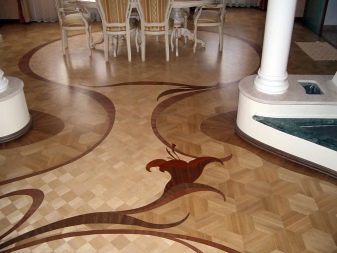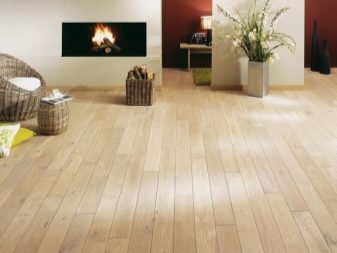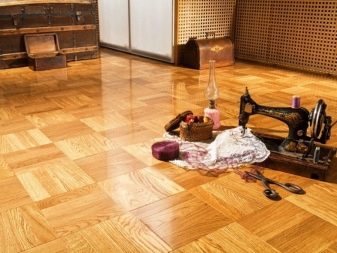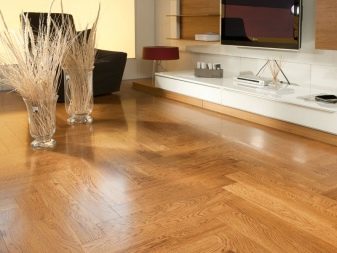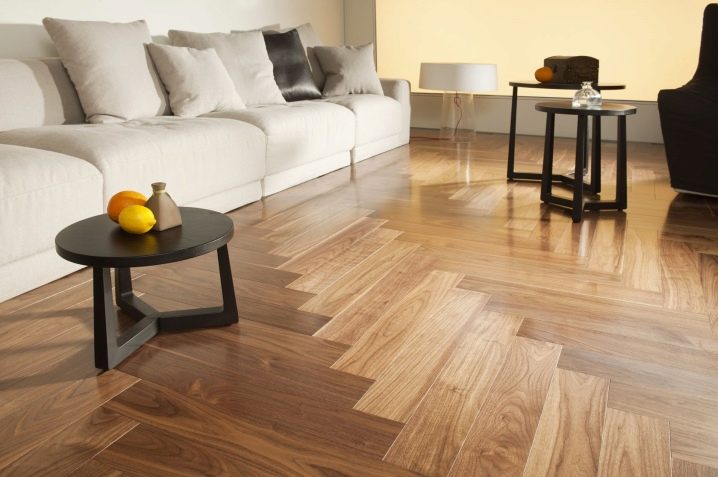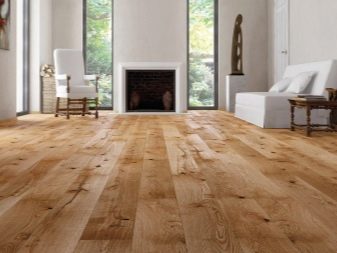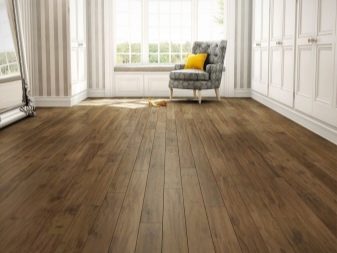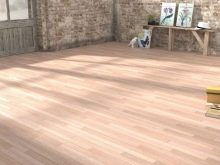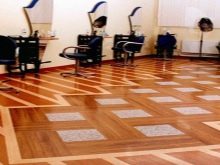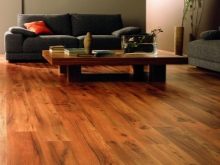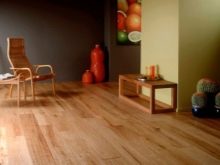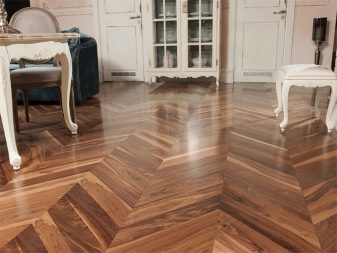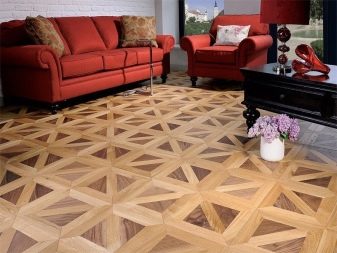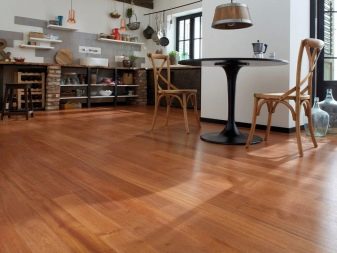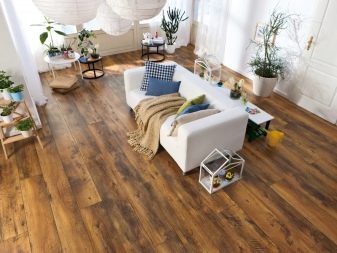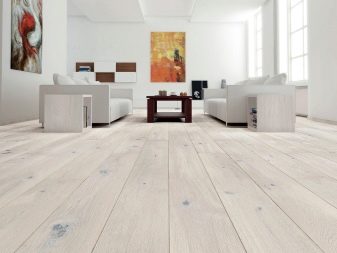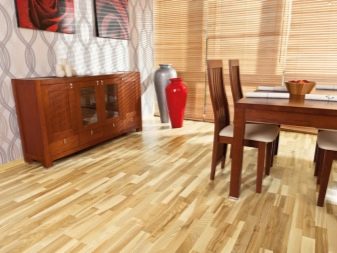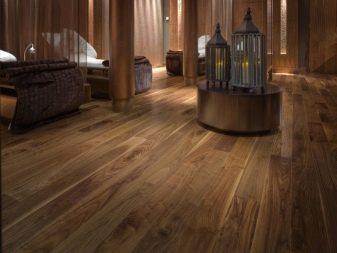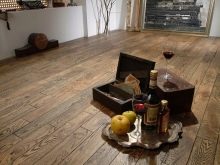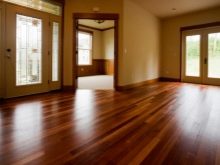How to choose linoleum in the form of parquet
Anyone who decides to buy a new flooring, you have to choose what is best to lay. Increasingly popular types of linoleum, decorated under the flooring. In this article we will try to understand what are the features of such a coating.
Practical choice
The choice of linoleum as a floor covering is a choice in favor of simplicity and practicality.
This parquet is noble, prestigious, eco-friendly, but, at the same time, expensive and difficult: the coating is capricious in care and without the help of a specialist you can’t lay it down. However, subject to all rules of operation, high-quality piece parquet can last up to 90 years. Linoleum is not such a "long-liver". Maximum worth counting on - It is 10-15 years of service.
The floorboard is not so demanding on the conditions of use, it is easier to install. It looks quite presentable, service life - up to 30 years.At cost it is comparable to a piece parquet.
The budget alternative to solid wooden coverings is linoleum in the form of parquet. This option is suitable for both residential and non-residential premises. PVC coating is much more waterproof than wood, and the pattern “under the parquet” can reproduce the texture of different types of wood and any options for laying parquet, including typesetting and artistic.
Pros and cons of linoleum
PVC coating retains heat well because of low thermal conductivity, it is quite reasonable to use it as an additional floor insulation.
Linoleum is relatively easy to care and styling. If necessary, it is laid on the old wooden floor, after appropriate preparation. The word “preparation” in this case is key, since vanity and carelessness will lead to the emergence of “bubbles” and “waves” on the floor, and the design of the old flooring can also appear.
It should be remembered that linoleum dents from prolonged exposure to heavy objects may appearand some types of coating fade from the bright sun. Coloring and caustic substances can "enter" in linoleum.And if the PVC coating is deformed, it will have to be completely replaced, and the parquet will be subject to partial replacement.
And, of course, synthetic linoleum is inferior to parquet in environmental performance. There is natural linoleum, but it has two major drawbacks: the high price and the complexity of installation.
When to prefer synthetics
Synthetic and natural linoleum differs in composition. Wood resin, linseed oil, limestone, jute - this is an incomplete list of components of "environmentally friendly" linoleum. However, if you are planning a flooring with a pattern “under the parquet”, and the main factors of choice were efficiency and ease of installation, you should pay attention to synthetics.
Natural linoleum is fragile, requires almost ideally flat surface for laying - Amateur with a similar job can not cope. Well, and besides, you can hardly find natural linoleum with a suitable pattern.
Types of linoleum for various purposes
Linoleum differs in purpose. There is a household, semi-commercial, commercial.
Household linoleum as well as possible is suitable for apartments and houses.Semi-commercial recommend for small offices, hotel rooms, as well as for the most "popular" rooms in the house - the kitchen and hallway. Commercial will be appropriate in shopping centers, large offices, this group sometimes also includes special linoleums for various production facilities. Respectively, The most durable material is commercial.
Marking linoleum contains information about the class of durability. These are two numbers that show which room the cover is intended for. The first number indicates the type of premises (“2” for residential, “3” for office, “4” for commercial and industrial premises). The second figure tells about the intensity of the load, the more it is - the stronger the linoleum.
When choosing linoleum, it is important to remember that its thickness is in no way related to wear resistance.
Thick and thin
PVC coating can be monolayer and multilayer in structure. In homogeneous (single-layer) linoleum there is no substrate. Despite the small thickness (1.5-3 mm), it practically does not wear out.
Manufacturers offer a wide range of colors and a limited selection of patterns. Therefore, if you need a wood imitation, better pay attention to heterogeneous (multilayer) coatings.
Multilayer linoleum (thickness 2-7 mm) conventionally consists of a base, a decorative and protective layers. The basis can be various: felt, nonwoven cloth, foamed PVC. “Thick” linoleum can mask some minor damage and surface irregularities. But in no case can it be considered a panacea for all occasions.
Heterogeneous linoleum - master of imitation. It is able to imitate not only the pattern, but also the texture of many materials: ceramic tiles, leather, wood.
Such linoleum in the form of a parquet will look like a parquet - a layman will not notice the difference.
Classical "herringbone" - a pledge of comfort
The final choice of linoleum in the form of parquet can affect the width of the roll. If it coincides in size with one of the walls of the room where the repair is planned, this will facilitate the installation work and the coating will look more attractive.
Linoleum, imitating a wooden floor, can fit almost in any style of decoration of the apartment. The realistic texture of wood contributes to the creation of comfort and a sense of comfort.Such a floor may be appropriate in any living room.
Memo to a novice interior designer
The drawing of the fibers of the tree should be directed along the sunlight from the window.
In dark rooms, the floor should be a little lighter than the wallpaper. Then the walls and the floor will not merge. And in bright rooms it is not recommended to use coatings of dark shades - they are too clearly visible settling dust.
Attention should be paid to the color combination of linoleum and interior doors - the doors should be darker. And if they are made in the red (or dark red) scale, you will have to abandon the flooring that simulates brown-black parquet.
If you want a light floor (for example, repeating the texture and pattern of maple or ash parquet) - do not overdo it with other white or pastel elements in the interior. Such too light rooms are often associated with a hospital ward.
In a small apartment to combine different flooring options with caution. Here the variety is inappropriate - it only reduces the visual perception of the room.
Color Matters
Floor coverings of natural shades are considered universal.Imitation of oak or acacia will suit almost any color solution of the interior.
It is also relatively versatile brown-chocolate color. But this is provided that enough light enters the room and the brown color stands out from the rest.
If the room is dark and you need to add some heat to the decor - pay attention to the yellow-beige tones. This soft shade has beech or maple.
Not suitable for any finish reddish, red-orange linoleum. In this case, the setting should be yellow, red, terracotta, brown, green.
Not every interior will be able to decorate seemingly neutral gray flooring. If the room is all cool, the gray floor will make it uncomfortable. Decisions can be decorative elements in warm colors.
An imitation of black or other very dark parquet can make a room too gloomy. However, to balance the balance of mood in this case is not difficult - it is enough to choose furniture of light shades.
And, of course, it is worth recalling that high-quality linoleum must have a certificate. Also pay attention to the manufacturer.Now "at the peak of popularity" flooring from Germany, Finland, France.
More information about how to choose linoleum in the form of parquet, you will learn from the following video.

